Baby Carrier Buying Guide -
Wraps
1
What is a Wrap Carrier
Although wraps are the oldest forms of baby carriers, they are still among the most
popular ones. The womb like comfort that the baby gets in a wrap makes it the
preferred choice for most parents.
The wrap is a popular baby wearing method due to its flexibility and the comfort it offers to both baby and wearer. It is basically a big piece of cloth wrapped around the baby and wearer, to suit own body dimensions. Therefore, the same wrap can be customized to suit different wearers.
The wrap is a popular baby wearing method due to its flexibility and the comfort it offers to both baby and wearer. It is basically a big piece of cloth wrapped around the baby and wearer, to suit own body dimensions. Therefore, the same wrap can be customized to suit different wearers.
There are 2 main types of wrap materials available today –
Stretch wrap – These are made of stretchable, knit materials, and allow you to put on the
wrap before slipping the baby in. However, these are not recommended for a back
carrying position, since the baby will not be too secure, due to the strength limitation of
the fabric. Also, these cannot be used for older or heavier children. Stretchable wraps
are also prone to sagging after continued use.
Woven wrap – These wraps are made of a lightweight, woven material, and come in
different sizes. This material allows you to use different wrapping positions without the
fear of the baby slipping out. Giving a blanket-like feel, the woven wraps are said to be
the most comfortable of all.
2
Why you Need a Wrap Carrier
You would need a wrap carrier if –
- You don’t want to fuss with buckles or straps or other accessories.
- You are looking for carriers that give you multiple carrying positions, while distributing your baby’s weight evenly on your shoulders.
- You want a carrier that will not make your baby too warm or cold, and will provide a cozy environment to the baby – the closest to your womb.
- You want to wear your baby in positions conducive and comfortable for breastfeeding.
3
How is a Wrap Carrier Useful
Wraps are one of the most versatile baby carriers around. They are useful due to various
reasons such as –
- You can place the newborns in froggy-legged position, so their weight rests on the baby bum rather than the feet. As your child grows older, you may start leaving the feet out.
- You can ensure that the baby’s neck and shoulders are protected until head and neck balance is achieved.
- The usage of a wrap also depends on its size.
- Long wraps may be tied in as front carry, a rucksack, a back wrap cross carry (this is usually done for newborns until they are old enough to be carried). A double hammock or a hip carry allows for older children who are able to sit, and whose neck muscles have strengthened enough to be carried.
- Short wraps can be used for a simple hip carry or rucksack style.
4
Features List
The list of features will help you in taking an informed buying decision.
Must Haves
- Fabric: Good quality stretchy, woven or gauze, according to the climate.
- Band: Free flowing bands with tapered edges, so it is easier to tie.
- Easy to clean: Wrap should be washable and should not shrink or lose color after the very first wash.
Good to Haves
- Storage: Pockets for holding keys, wallets or diapers.
- Decorative panel: Panel with batik, solids, embellished, blocks, patterns, etc.
5
Pros and Cons
Before you decide to buy a wrap, have a look at its pros and cons.
| Pros | Cons |
| Being wrapped to the mother gives newborns a physical and psychological bonding. | It takes time to learn and master the art of wrapping. |
| It helps with various commonplace infant problems such as colic, reflux and grumpiness. | It takes a minute or two to tie the wrap around your body, during which time, your child might be crying or squirming. |
| It provides the best support to the child’s head and neck, hips and legs. | Troublesome for parents having back or lumbar problems, strain issues, etc. |
| The child can be placed either in front, hip or back carry positions. | |
| Inexpensive (when compared to buckle carriers). | |
| Hands-free option for work at home or work from home mothers/parents. |
6
What to look for when buying a Wrap
There are a few things you need to keep in mind when buying a wrap –
- Choose a wrap based on how suitable the fabric is to your climate.
- Consider the carrying positions you would mostly require. Remember, stretchable wraps do not come with many positions.
- Check if the manufacturer provides an instruction manual or a demo DVD, so you can learn how to use the wrap properly.
- Ascertain from the manufacturer’s manual or website, the process in which the wrap has been created. Check to see if the fabric has undergone any chemical treatments, since an improperly treated fabric can cause allergic reactions in your baby’s skin or yours.
7
Types of Wraps across Cultures
Wraps are as old as perhaps humanity itself. They are still used in various forms, across
different cultures around the world, for baby wearing and giving the mother
(predominantly) the independence to move about. In many countries like China, Korea,
Japan, and other South East Asian countries, wraps have traditionally been used to keep
the child warm and close to the mother, especially during the long and cold winters.
Today, these traditional wraps are as popular as ever, with a range of modifications
available to make them suited for the present times. In the following sections, you will
find detailed information about 5 types of wraps –
- Mei Tai, from China
- Podaegi, from Korea
- Onbuhimo, from Japan
- Hmong, from the Hmong tribes, South East Asia
- Rebozo, from South America
-
Mei Tai (Chinese Baby Carrier)
-
What is a Mei Tai The word Mei, in Chinese, means to carry on the shoulders and Tai is a strap or a band. Mei Tai is therefore a square or nearly square piece of cloth with parallel, unpadded straps emerging from the sides of each corner. The traditional Mei Tais are secured by bringing all the straps together to form a cross with the ends tucked at the waist. There are now many variations of this traditional version, but the long straps, tall body, and wrap-style tying method are found in almost all of them. Why you Need a Mei TaiPronounced as ‘May Tie’, as in, ‘May I Tie Your Baby’, Mei Tai is an ancient Chinese baby carrier that has been used by the natives, for many centuries, to ‘wear’ their babies to work. The traditional form is a simple piece of cloth that moms used to wear their babies in, by bringing together all four corners of the cloth and knotting them. These baby carriers were introduced to the western world in the 1960s,9and have been immensely popular since then.
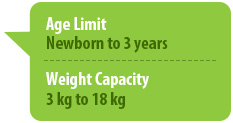 You need a Mei Tai if –
You need a Mei Tai if –- You are looking for a carrier which is easy to put on and take off, and can be used by multiple wearers.
- You are looking for a single baby carrier to use right from your child’s birth till such time when you can support your child’s weight.
- You want to carry your child in both front, back, and hip carrying positions.
- You are looking for an inexpensive baby carrier.
How to Use a Mei TaiFeatures List Before you buy a Mei Tai, have a look at following features of a Mei Tai.- When using it for an infant, spread the Mei Tai on the floor and then place the baby on it. Pull the built-in fastener around the baby’s chest, all the way to your front, and fasten it at your chest. This way, the baby is fastened to you for firm support. Then bring the baby on to your back, either by bending over so your back is the baby's table, or by sliding the baby from the hip.
- Thereafter, tie the bottom straps around your waist, and pull the top straps. Use this tension to make the baby upright. Then pull it under your baby’s buttocks and cross it over to the front and secure it at your waist.
- With older children, get them to hop into the pouch after you have secured the bottom part. Once they are seated, fasten the top portion.
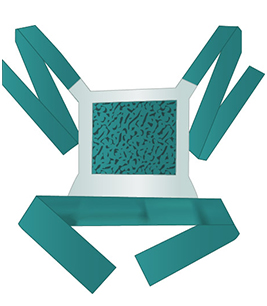 1
2
3
4
5
Mei Tai from China
1
2
3
4
5
Mei Tai from China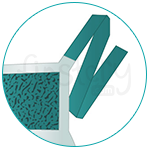 1 StrapThese straps emerge from the sides of each corner and can be tied or buckled. The straps must be 3-4” wide, for greater comfort.
1 StrapThese straps emerge from the sides of each corner and can be tied or buckled. The straps must be 3-4” wide, for greater comfort.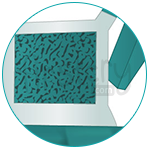 2 ReversibilityOption of reversibility, so that both sides of the Mei Tai can be used.
2 ReversibilityOption of reversibility, so that both sides of the Mei Tai can be used.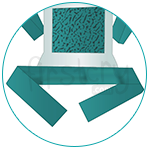 3 Waist StrapWaist straps should be padded and about 180cm long. Shoulder Straps should be about 150cm long.
3 Waist StrapWaist straps should be padded and about 180cm long. Shoulder Straps should be about 150cm long.
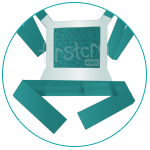 4 Easy to CleanWrap should be washable and should not shrink or lose color after the very first wash.
4 Easy to CleanWrap should be washable and should not shrink or lose color after the very first wash.
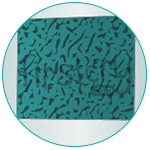 5 FabricBreathable fabric that is machine washable.
5 FabricBreathable fabric that is machine washable.
Must Haves- Straps: These straps emerge from the sides of each corner and can be tied or buckled. The straps must be 3-4” wide, for greater comfort.
- Leg Holes: Some manufacturers provide adjustable leg openings using snap buttons. You can cinch the tabs closer or wider to adjust the opening for babies to put their legs out of.
- Fabric: Breathable fabric that is machine washable.
- Straps: Waist straps should be padded and about 180cm long. Shoulder Straps should be about 150cm long.
- Easy to clean: Wrap should be washable and should not shrink or lose color after the very first wash.
Pros and Cons While every carrier has its advantages and disadvantages, it is important to know them before you decide on buying any one of them. Listed below are a few pros and cons that you need to keep in mind.Good to Haves- Interchangeable Panels: Some manufacturers provide the option of changing the fabric on the back of the carrier, for a new look or a different climate.
- Cross stitching: Extra stitching at seams to ensure greater sturdiness.
- Attachable hood: For protection from sunshine.
- Fabric made out of Eco-friendly processes.
- Storage: Storage pockets to keep purse, keys, etc.
- Reversibility: Option of reversibility, so that both sides of the Mei Tai can be used.
Pros Cons The Mei Tai is incredibly easy to put on and take off, once you master the process of tying it. It may be a pain to put on when you are already outdoors. It is most convenient to be worn when you are setting out, so getting your little one into it while getting out of the car and into the supermarket may be tricky. The babies sit in the froggy-leg position in Mei Tais, thereby reducing the risk of hip dysplasia. One needs proper instructions and training to successfully wear a Mei Tai. It is very soft and pliable, and molds much more easily to your body and the baby’s. The Mei Tai allows you to comfortably wear your child to the front or back, and adjust the height according to the physique of the wearer. Also, the Mei Tai is available in a range of Asian designs that keep the little one occupied. What to look for when buying a Mei Tai- Find a Mei Tai that fits you.
- Mei Tais come in different fabrics. Choose one that suits your climate, and is comfortable for your baby. Some Mei Tais come with extra padding for cold weather.
- Check if the carrier has padded seams, which work as head rests for a newborn baby.
- Go for broad padded shoulder straps and long waist straps, so it does not dig into your shoulders, and is comfortable to wear.
- Check for the presence of an instructional manual or video along with the product.
-
Podaegi (Korean Baby Carrier)
-
What is a Podaegi A Podaegi is made up of two long straps and a long blanket. The straps hold the majority of the child's weight, so you can go for a blanket with a lighter material compared to the body of a Mei Tai. This is particularly useful for summer. Podaegies can be made with two types of straps – straight or angled.Podaegies were invented in Korea, for use by mothers who had to carry their babies around while doing manual labor. They needed to wear their children for many hours, and required something that would keep the children close and tight. Podaegies were devised as the perfect solution for this. A Podaegi is primarily a blanket-like sling that is used to carry the baby around. A traditional Korean style of baby wearing, Podaegies come with no complicated ties or rings.
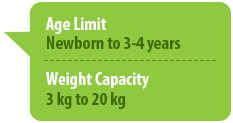
Angled-strapped Podaegies are used for front, rucksack, or hip carry positions.
Straight-strapped Podaegies can be used for the same positions, along with back carry with a chest-rest, torso carry and back wrap cross carry positions.
Podaegies can be used in a front carry position from birth, and in a back carry position from when your baby has good head control (around 3-4 months). Why you Need a PodaegiYou need a Podaegi if –- You are going to be working around the house or you want to go for a short walk.
- You want to carry your baby on the back. (While Podaegies can be used as a front carrier for newborns, they are primarily made for back carrying positions, for babies who have attained control over their head and neck.)
How to Use a PodaegiFeatures List Before you make any buying decision, have a look at the following features of a Podaegi.- When using it for an infant, spread out the Podaegi on the floor and then place your little one on it. Use the straps of the Podaegi to secure the baby and urge him forward to bring him onto your back.
- Automatically use your back as a table for your little one. Use the shoulder straps to firmly secure him in place, or to pull up your little one higher up on your back.
- Fasten the security sash in front of your bust. Thereafter, pull the shoulder strap over the front and right below under the buttocks of the baby. The sash must then be wrapped around the waist and secured tightly. (Make sure it is tight as it may tend to loosen slightly.)
- With older children, slide them into the Podaegi from the hip.
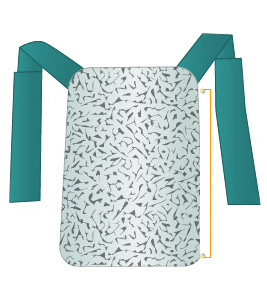 1
2
3
4
Podaegi
1
2
3
4
Podaegi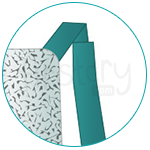 1 StrapThe straps must be wide and sturdy and secured using Velcro.
1 StrapThe straps must be wide and sturdy and secured using Velcro.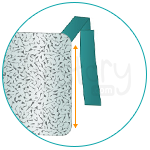 2 Panel LengthNarrow and rectangular in shape. The fabric should be breathable and created out of eco-friendly processes, so it does not cause the baby any allergic reactions.
2 Panel LengthNarrow and rectangular in shape. The fabric should be breathable and created out of eco-friendly processes, so it does not cause the baby any allergic reactions.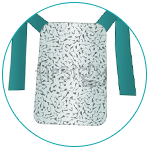 3 ReversibilityReversible panel, so both sides of the Podaegi can be used.
3 ReversibilityReversible panel, so both sides of the Podaegi can be used.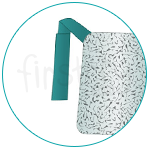 4 Easy to CleanWrap should be washable and should not shrink or lose color after the very first wash.Must Haves
4 Easy to CleanWrap should be washable and should not shrink or lose color after the very first wash.Must Haves- Panel length: Narrow and rectangular in shape. The fabric should be breathable and created out of eco-friendly processes, so it does not cause the baby any allergic reactions.
- Straps: The straps must be wide and sturdy and secured using Velcro.
- Easy to clean: Wrap should be washable and should not shrink or lose color after the very first wash.
Pros and Cons While every carrier has its advantages and disadvantages, it is important to know them before you decide on buying any one of them. Listed below are a few pros and cons that you need to keep in mind.Good to Haves- Decorative panel: Customized hems or fringes with embroidery or appliqué to decorate the Podaegi panel.
- Headrest: Padded upper seams work as head rest. Best for babies who have not developed head and neck control. Also, some models allow leg rests.
- Padded straps: Padding on straps for greater comfort for the wearer.
- Storage: Toy/ pacifier holder and purse holder.
- Reversibility: Reversible panel, so both sides of the Podaegi can be used.
Pros Cons Podaegies are very snug and comfortable for young children. Cannot be used while breastfeeding. Avoids undue pressure on the wearer’s body as the weight is distributed uniformly. Not many carrying positions are possible. Customizable length, width and height to fit to the body of the wearer and baby. Not the simplest carrier to use, but one of the more versatile ones. Being wrapped in a Podaegi allows children to listen to their mothers' heartbeat and feel close to them. This helps them restore the emotional stability that they once had inside their mothers' womb. There is a learning curve involved in tying up a Podaegi correctly. It is one of the few carriers that allows for a secure torso, which is a great feature if you have shoulder problems. It also allows you to carry your baby high on your back if you have an older baby who likes a great view. A Podaegi is good for the development of your baby’s hip joint. Front, back and side/hip carry positions are possible. What to look for when buying a Podaegi- Try it out with the baby in the Podaegi before buying it.
- Podaegis come in different fabrics. Choose one that suits your climate, and is comfortable for your baby. Some Podaegis come with extra padding for cold weather.
- Check if the Podaegi has padded seams, which work as head rests for a newborn baby.
- Go for a reversible Podaegi.
- Go for Podaegi that has broad padded shoulder straps.
-
Onbuhimo (Japanese Baby Carrier)
-
What is an Onbuhimo Onbuhimo is the Japanese style of baby carrying. An Onbuhimo is much like a Mei Tai and Podaegi. However, the main difference is that the Onbuhimo is equipped with rings in the front, to secure the baby carrier rather than tying it back and forth. Why you Need an OnbuhimoIf you are expecting your second child while your first one still needs to be carried around, Onbuhimo is the carrier for you. This Japanese carrier has come a long way from helping Japanese moms get along their work in fields while their baby piggybacked behind them, to helping today’s moms manage home and work while keeping their children close to them.
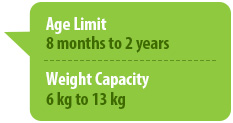 You need an Onbuhimo if –
You need an Onbuhimo if –- You are looking for a hands free way to carry your baby through your daily activities.
- You are a pregnant woman with a toddler in tow. (The absence of a waist strap makes this baby carrier best suited for expecting mothers to carry their older child on the back.)
- You want to put on or take off the baby carrier quickly.
- You want to easily tie the baby in front, back and hip carrying positions.
How to Use an Onbuhimo The instruction for wearing an Onbuhimo is similar to that for wearing a Mei Tai or a Podaegi through the first three steps.Features List Before you buy an Onbuhimo, have a look at the following features of an Onbuhimo.- Seat / sleep the baby onto the stretched out Onbuhimo on a flat surface. Sit with your back towards her. Then slowly bring your body parallel to your little one. Use the shoulder straps to push the baby onto your back. This achieved, slide forward immediately and smoothly, such that the child is now lying on your back facing inwards.
- Thereafter, clasp the waist fastener first. Use the shoulder straps to firmly secure the baby in place by rolling them under the baby’s buttocks.
- The last step is different from that of tying a Mei Tai or a Podaegi. Once the baby is tightly secured, slide it to the front through the rings on the sides and then tie it in front of your waist.
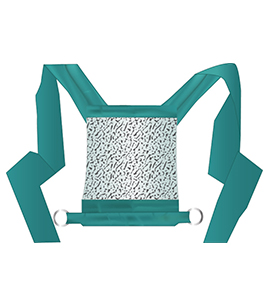 1
2
3
4
Onbuhimo
1
2
3
4
Onbuhimo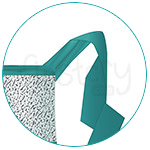 1 StrapShoulder straps should be padded for extra comfort. (Approximately 9” wide and 12”-14” long.)
1 StrapShoulder straps should be padded for extra comfort. (Approximately 9” wide and 12”-14” long.)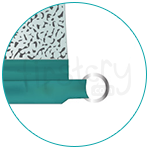 2 RingRings at the waist should be weight tested and sturdy.
2 RingRings at the waist should be weight tested and sturdy.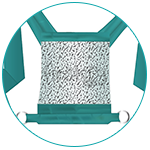 3 ReversibilityReversible panel, so both sides of the Onbuhimos can be used.
3 ReversibilityReversible panel, so both sides of the Onbuhimos can be used.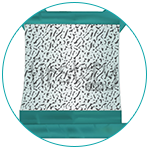 4 FabricCotton or cotton-mix outer layer, and canvas, twill or duck inner layer.Must Haves
4 FabricCotton or cotton-mix outer layer, and canvas, twill or duck inner layer.Must Haves- Fabric: Cotton or cotton-mix outer layer, and canvas, twill or duck inner layer.
- Straps: Shoulder straps should be padded for extra comfort. (Approximately 9” wide and 12”-14” long.)
- Rings: Rings at the waist should be weight tested and sturdy.
Pros and Cons While every carrier has its advantages and disadvantages, it is important to know them before you decide on buying any one of them. Listed below are a few pros and cons that you need to keep in mind.Good to Haves- Attachable hood: For protection from sunshine.
- Buckles: Some Onbuhimos come with buckles, instead of rings, at shoulder straps, to suit the wearer’s convenience.
- Reversibility: Reversible panel, so both sides of the Onbuhimos can be used.
- Storage: Pockets on the waistband for wallet, phone or keys.
- Leg holes: Extra leg padding to provide greater comfort to the baby’s little legs. Since the edges are not tight as in a square blanket carrier (such as Mei Tai), they don’t cut into the baby’s thighs.
- Padded rails: Curved top edges to provide a smooth railing for the baby’s arms.
Pros Cons The thick shoulder straps make carrying easy for the wearer. Not suitable for newborns or infants who cannot sit unassisted. Can be used by multiple wearers through adjustments. Needs custom features like pockets, leg padding, and headrest padding to make it more comfortable. Onbuhimos are relatively easier to put on and take off than other wraps. A learning curve is involved before one can confidently start using this carrier. The carrier also offers support under the leg while it curves away towards the thigh as it passes behind the child. That is, the edges of the carrier don't dig into the bony part at the back of the knees when they pass around the leg. What to look for when buying an Onbuhimo- When investing in an Onbuhimo, make sure to get a big one that can be used until your child outgrows carriers, and one that can be worn by multiple wearers.
- Choose a fabric suitable to the weather conditions of your place. It must also be easy to wash and maintain.
- Check if the shoulder straps are broad enough and padded.
- Go for models which allow for reversibility. This will give you some variety while wearing the carrier.
- Check if your Onbuhimo comes with hoods and head supports.
-
Hmong (Asian Baby Carrier)
-
What is a Hmong Hmong is a traditional baby carrier used by the Hmong tribe of South East Asia. The Hmong is marked by the distinct and extremely aesthetic designs you see on the body of the carrier. It is made of a panel of fabric with two straps on the top. The panel can be decorated with embroideries. It is primarily a back carrier, but can also be used for front carry sometimes. Why you Need a HmongHmong tribes originate from the mountainous regions of China, Vietnam, Laos and Thailand. Although subsequent wars in the region caused them to flee to Thailand and to many other Western countries, the Hmong people still carry with them a great treasure trove of tradition and culture. Being primarily an agrarian population, the Hmong women used to wear their baby while helping out the men folk in the fields or while doing the domestic chores. This carrier, known today as the Hmong carrier, is very popular among baby wearers today, for both its simplicity and aesthetics.
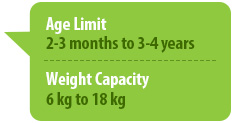 You would need a Hmong if –
You would need a Hmong if –- You are looking for a simple baby carrier without a lot of fuss.
- You are someone who loves aesthetic embroideries and colorful patterns.
How to Use a Hmong The Hmong can be worn on the front and on the back. BackFeatures List Check the features of a Hmong, before making a buying decision.- Hold the baby a little above your head level. Place the Hmong over the baby’s back and slide the shoulder straps under the armpits. Once you are sufficiently confident that you have a good grasp over it, let go of the baby‘s body and balance the baby with the Hmong. Use your judgment to sufficiently secure the straps.
- Pull the straps under your armpits and across the baby’s back. Cross over the straps and then bring it to your front from under the legs of the child. This way the baby is well-secured.
- Be sure to keep the lower cross at your lower back, so the weight of the baby is uniformly distributed and not all of it falls on your back.
- If the baby goes off to sleep while you are up and about, you can reach over and pull the rectangular cloth a little above the child’s head, so the baby has firm head support while sleeping.
- The same exercise should be repeated, but this time holding the baby in front.
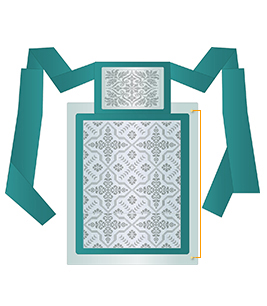 1
2
3
4
5
Hmong from the Hmong tribes
1
2
3
4
5
Hmong from the Hmong tribes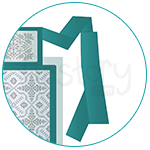 1 StrapTwo straps attached to either side of the top of the panel.
1 StrapTwo straps attached to either side of the top of the panel.
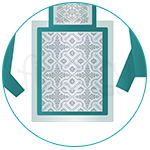 2 Panel LengthA long rectangular panel made of cotton or some cotton mixed material.
2 Panel LengthA long rectangular panel made of cotton or some cotton mixed material.
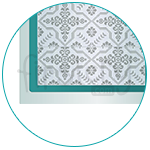 3 Easy to CleanAs a busy parent of a new-born, you need a baby carrier that is convenient and easily machine washable.
3 Easy to CleanAs a busy parent of a new-born, you need a baby carrier that is convenient and easily machine washable.
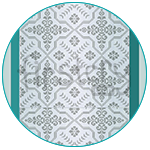 4 Decorative PanelAs per your liking you can order or make yourself a beaded or colorful embroidered panel.
4 Decorative PanelAs per your liking you can order or make yourself a beaded or colorful embroidered panel.
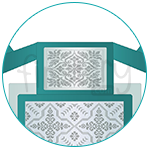 5 Attachable HoodFor protection from sunshine.
5 Attachable HoodFor protection from sunshine.
Must Haves- Panel length: A long rectangular panel made of cotton or some cotton mixed material.
- Straps: Two straps attached to either side of the top of the panel.
- Padding: Extra padding to give strength to the carrier.
- Easy to clean: As a busy parent of a newborn, you need a baby carrier that is convenient and easily machine washable.
Pros and Cons While every carrier has its advantages and disadvantages, it is important to know them before you decide on buying any one of them. Listed below are a few pros and cons that you need to keep in mind.Good to Haves- Attachable hood: For protection from sunshine.
- Decorative panel: As per your liking you can order or make yourself a beaded or colorful embroidered panel.
Pros Cons Extremely convenient to make and wear. Ease of wearing has a learning curve, since the absence of extra straps makes it a slight balancing act. The shoulder straps can also be tied around your body, under the arms, in a torso carry way. This is an excellent option if you have shoulder problems. Not advisable for newborn babies, as they need head and neck support. What to look for when buying a Hmong- The straps of the Hmong should be long enough to suit children’s size as well as that of multiple wearers.
- Check if the carrier has a padded top panel to support the baby’s head.
- Go for a Hmong carrier with a wide main panel so it can accommodate babies of different sizes.
-
Rebozo (Latin American Baby Carrier)
-
What is a Rebozo Rebozo is a baby carrier that originated in Mexico. It is one of the simplest and most diverse baby carriers available today. It is a single shoulder carrier fastened on one side of the body. The model is even today available with sling rings. Why you Need a RebozoRebozos are traditional Mexican shawls or scarfs that have long helped women of this region get through their pregnancy, child birth and parenting, and can be used even after their children have all grown up. Midwives use these to support the pregnant bellies of the women in labor. Once the child is born, Mexican women use it to wear their baby, and once the baby has outgrown it, the Rebozo can still be continued to use as a knapsack or an elegant shawl. What draws the modern mother to the Rebozo is its simple design and exquisite looks.
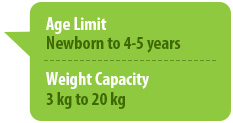 You would need a Rebozo if –
You would need a Rebozo if –- You are looking for a simple carrier to use in various positions, from birth till your child reaches toddlerhood.
- You want to nurse your newborn while carrying.
How to Use a RebozoFeatures List There are some important features in a Rebozo.- Pleat your Rebozo and place it over your shoulder to find an approximate mid-point. Hold it from the back, at shoulder length, and pull it down so the tail in the front is shorter.
- Now raise the Rebozo sideways from behind and start pleating it from down up. Throw it over to the front of your shoulder, from the hip position.
- Now fold the long tail around the short tail and cross it over to the front, at your bust level. Further, move it behind the short tail again and then push it out through the gap created between the earlier lock and the short tail.
- Tighten this knot by pulling it along with the short tail.
- Now place the baby into the wrap and check if the levels are comfortable. If the wrap has dislocated, adjust it before you pull the wrap up.
- Once set in place, gently pull the wrap over the baby’s shoulder and up to his neck. Ensure that 1/3rd of the wrap covers the baby’s buttocks, 1/3rd his body and 1/3rd is left for the baby’s head.
- If the baby has not yet learnt neck control, fold the top rail of the sling and help create some padding to give him the much-needed support.
- Then spread the cloth over your shoulder, so as to divide the pressure of weight.
Must Haves- Handmade: Authentic Rebozos are hand woven shawls of various sizes.
- Fabric: Cotton or cotton mix fabric that is sturdy, yet soft and pliable.
Pros and Cons While every carrier has its advantages and disadvantages, it is important to know them before you decide on buying any one of them. Listed below are a few pros and cons that you need to keep in mind.Good to Haves- Ring: Sling rings to make the knotting easier.
- Decorative panel: As per your liking you can order or make yourself an Ikat design with tassels at both ends.
Pros Cons Perfect for newborns. Also useful to carry older children. It takes a couple of wears to master the art of balancing your little one while going about your tasks. Convenient for nursing. The learning curve is steep. A Rebozo can be used as a regular shawl too. What to look for when buying a Rebozo- Try the carrier once before buying it - the length should be appropriate to allow for the multiple knots.
- A woven or knitted Rebozo gives extra support to the posture of the baby and is helpful to carry older children too.































